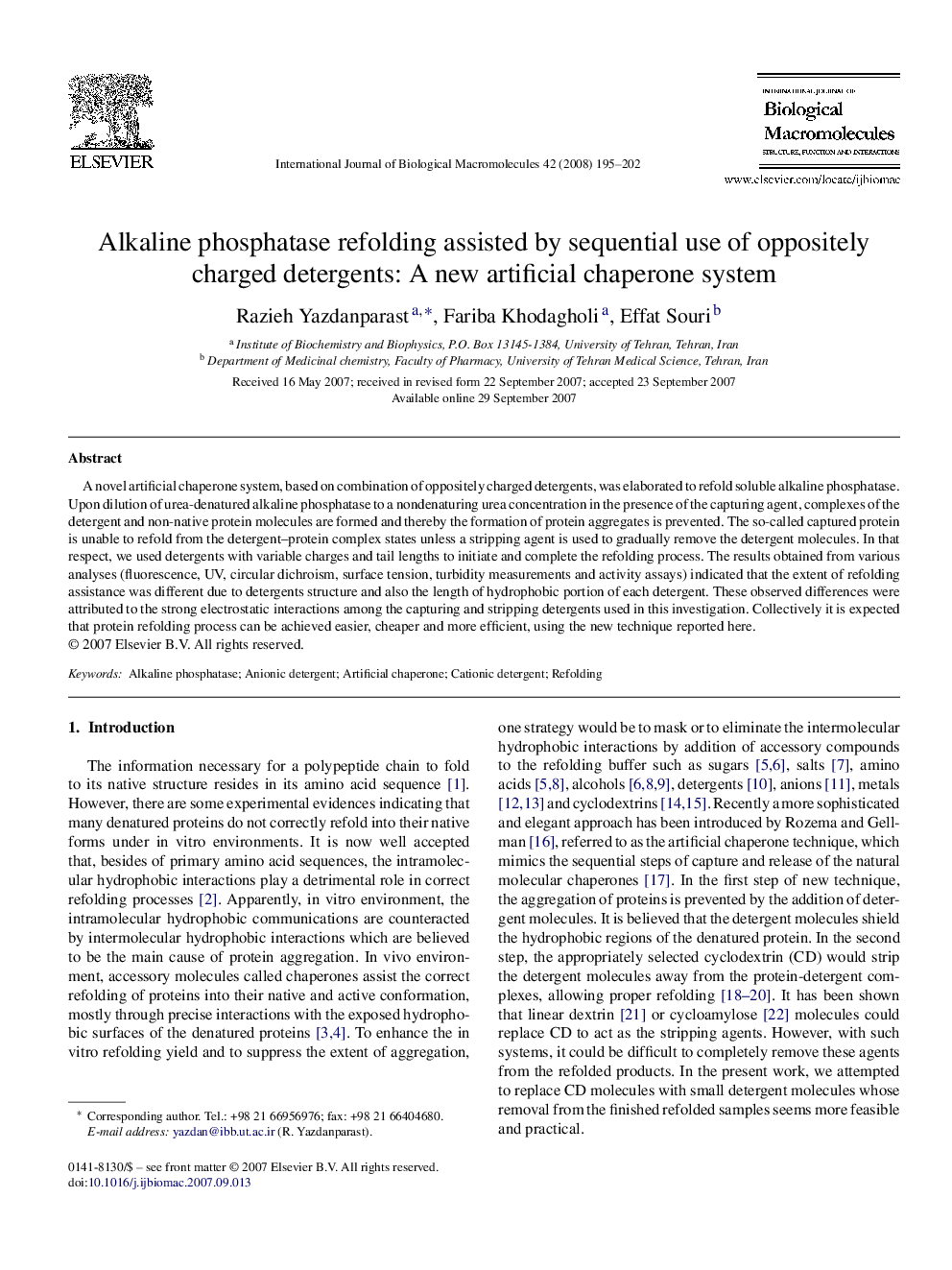| Article ID | Journal | Published Year | Pages | File Type |
|---|---|---|---|---|
| 1987944 | International Journal of Biological Macromolecules | 2008 | 8 Pages |
A novel artificial chaperone system, based on combination of oppositely charged detergents, was elaborated to refold soluble alkaline phosphatase. Upon dilution of urea-denatured alkaline phosphatase to a nondenaturing urea concentration in the presence of the capturing agent, complexes of the detergent and non-native protein molecules are formed and thereby the formation of protein aggregates is prevented. The so-called captured protein is unable to refold from the detergent–protein complex states unless a stripping agent is used to gradually remove the detergent molecules. In that respect, we used detergents with variable charges and tail lengths to initiate and complete the refolding process. The results obtained from various analyses (fluorescence, UV, circular dichroism, surface tension, turbidity measurements and activity assays) indicated that the extent of refolding assistance was different due to detergents structure and also the length of hydrophobic portion of each detergent. These observed differences were attributed to the strong electrostatic interactions among the capturing and stripping detergents used in this investigation. Collectively it is expected that protein refolding process can be achieved easier, cheaper and more efficient, using the new technique reported here.
